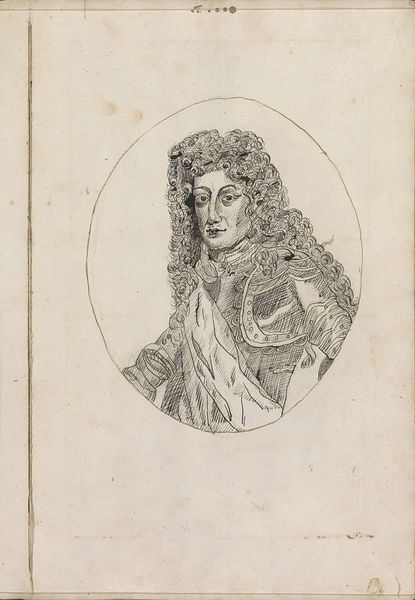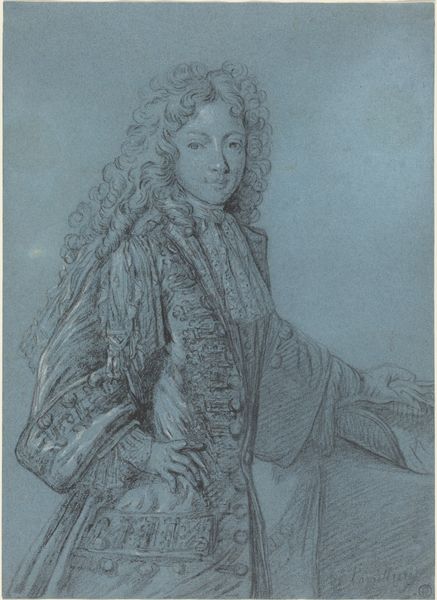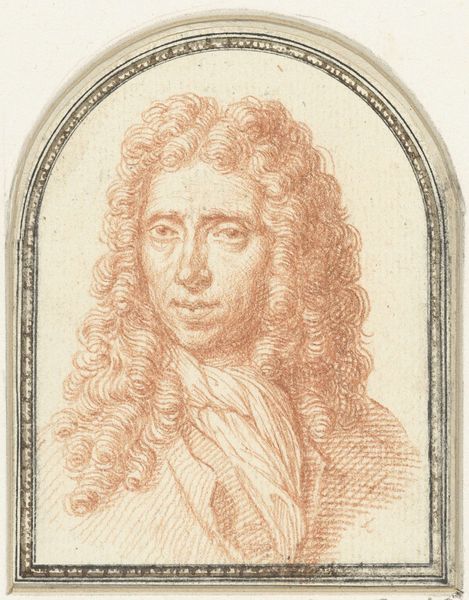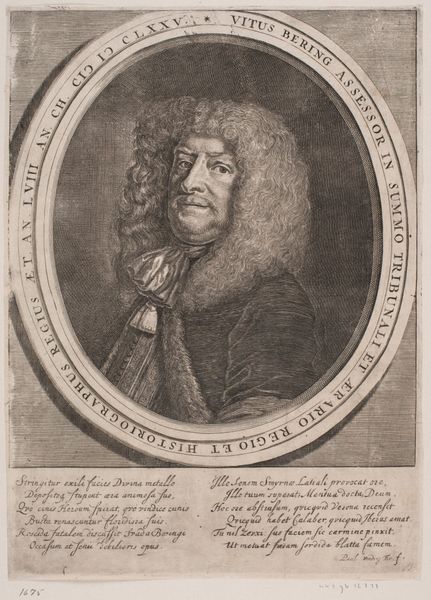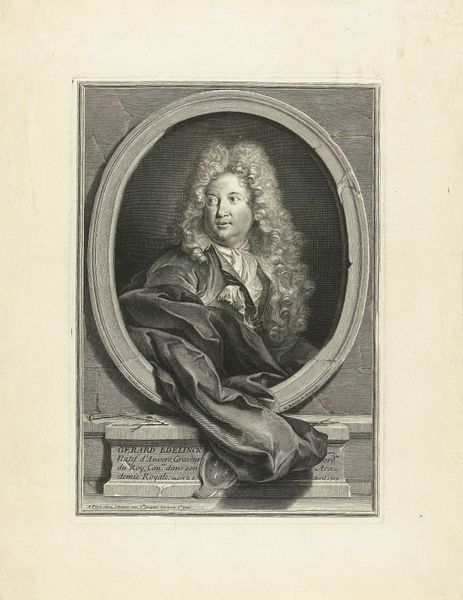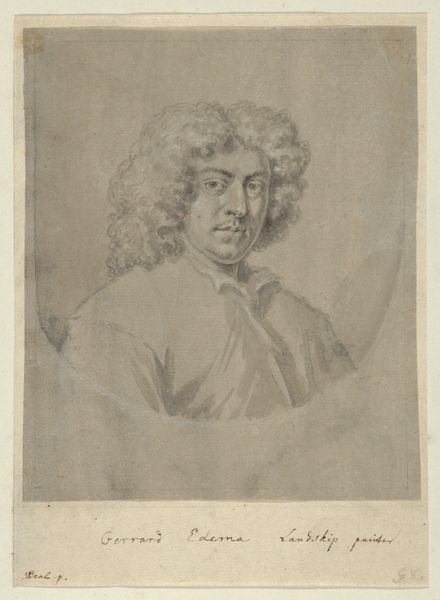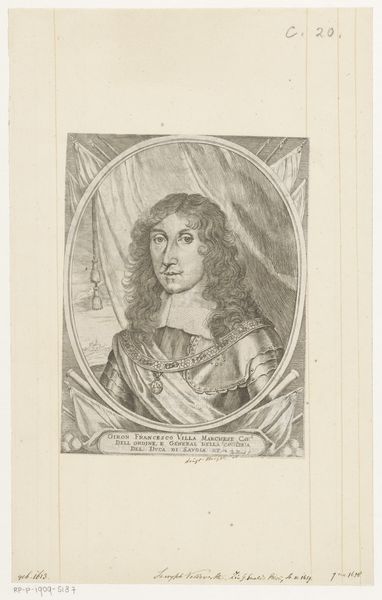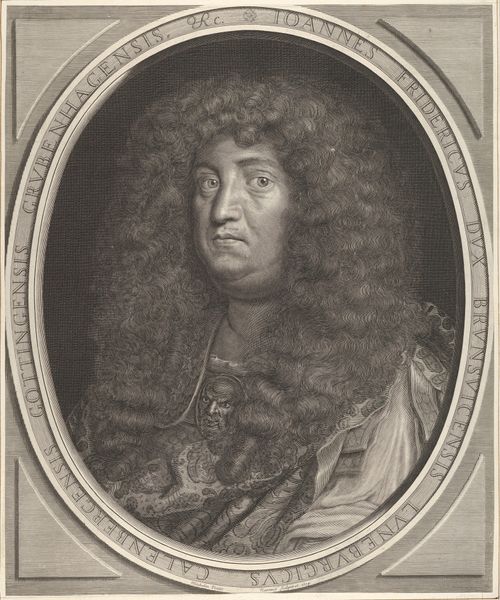
drawing, pencil
#
portrait
#
drawing
#
baroque
#
pencil drawing
#
coloured pencil
#
pencil
#
academic-art
Copyright: Rijks Museum: Open Domain
Curator: Look at this intriguing portrait executed circa 1696. It is thought to be Willem III, Prince of Orange, rendered meticulously by Hendrick van Beaumont in pencil. What's your initial take on this piece? Editor: Well, first impressions, it has a kind of faded grandeur, like an old sepia photograph, but softer, dreamier. He seems a bit trapped, encircled there. Almost as though the act of portraying him froze him in that moment of perceived power. Curator: That's interesting. We have to remember that portraiture then was as much about projecting status and authority as it was about capturing likeness. It certainly embodies the aesthetic conventions of Baroque portraiture, wouldn't you agree? Notice the circular composition within the square support—very distinctive and, frankly, rarely seen at this date. Editor: Absolutely. The composition feels almost...caged. Those curls that seem almost violently spiraled around the figure and face and that little tiny mouth and very large forehead. Those give me such anxiety. Does the piece express some reservation about absolute authority and its representatives, would you guess? Curator: It's certainly possible, although the work may not have been intended to question authority. Portraiture was, to a certain extent, propaganda, reinforcing social hierarchies. Though perhaps the subtle medium here suggests less formal engagement than many more painted and sculpted royal examples? It's tough to know for sure without more information. Editor: Perhaps its most revealing, finally, in its ambivalence—suspended between proclamation and subtle disquiet. That slight downward glance seems both regal and almost—how to put it—vulnerable? So very delicate, rendered in pencil, one mistake and, whoops! History would look very different... Curator: And maybe that inherent instability and reliance upon one’s physical body is Beaumont's commentary: the drawing’s delicacy perhaps points to the precarious nature of power itself. This drawing becomes another facet of thinking about image and politics, particularly in art that takes the depiction of powerful men as its very subject. Editor: Agreed. A testament, in the end, to art's ability to whisper dissent, even when ostensibly celebrating power. The artist has gotten very still to share his world so far into the future. Thanks, Hendrick! Curator: Indeed. This work exemplifies art's multifaceted capacity to communicate across the centuries and challenge fixed notions.
Comments
No comments
Be the first to comment and join the conversation on the ultimate creative platform.


